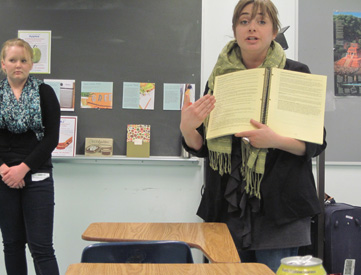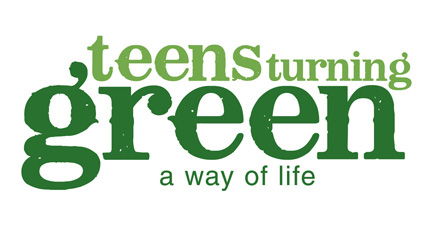 About 80,000 chemicals used in products are manufactured in the United States and almost all have not been tested for safety, a scientist told dozens of teens, parents and educators Saturday at an environmental education conference near Inglewood.
About 80,000 chemicals used in products are manufactured in the United States and almost all have not been tested for safety, a scientist told dozens of teens, parents and educators Saturday at an environmental education conference near Inglewood.
“We’re all being exposed to this,” said Renee Sharp, senior scientist and director at the Environmental Working Group. Many of these chemicals are associated with cancer, autism and asthma.
The conference was aimed at encouraging students to launch green movement groups in their schools. Teens Turning Green, a national student-led environmental advocacy organization, hosted the event.
“You are the most powerful people on Earth,” said Judi Shils, founder of Teens Turning Green. Shils told the teens that they have the most influential voices in persuading legislators to make changes because they do not expect the passion that some teens have.
“My goal is to let every kid in here know that you can change the world,” Shils said.
The presenters said that even simple changes, like persuading schools to replace toxic whiteboard markers for refillable, non-toxic ones, make a big difference.
“If you guys try to talk to your legislature, it’s harder for them to say no,” Sharp said.
The audience learned about topics ranging from the harmful effects of pesticides to what kind of harmful chemicals are found in cosmetics and household products.
One prevailing piece of advice was for teens to pick one area of their life and make a pledge to change a behavior into a more socially responsible one, whether it is using reusable bags instead of plastic bags or limiting showers to four minutes.
 Jordan Howard, 18, an environmental advocate who has opened for Secretary of State Hillary Clinton, said that education changed her once skeptical perception about the green movement. After taking environmental classes, Howard said she learned practical solutions for how she could make a difference.
Jordan Howard, 18, an environmental advocate who has opened for Secretary of State Hillary Clinton, said that education changed her once skeptical perception about the green movement. After taking environmental classes, Howard said she learned practical solutions for how she could make a difference.
“It really inspired me because I saw that the green movement was real,” Howard said. “We have the influence and we need to start using that influence in a right way.”
Listen to Howard’s speech at the conference:
Many teens at the conference said they wanted to learn how to make decisions that were better for their environment.
“Start in your local community,” said Anna Cummins, co-founder of 5 Gyres, a non-profit research group to end plastic pollution. She advised the teens to find their passion and make their activism fun.
Cummins, who researches plastic pollution in the ocean, said that pollution is “not just a litter issue, it’s also potentially a public health issue.”
Many of the presenters talked about the possible links between the chemicals in products to diseases, cancer and other illnesses, and they suggested organic food as the healthier, “greener” alternative.
“This green movement is a healthy movement…that will help us save ourselves from diseases like cancer and diabetes,” Howard said. “Once you care about the earth, you begin to care about yourself, and you begin to care about the people that are around you.”
Logo courtesy of Creative Commons















